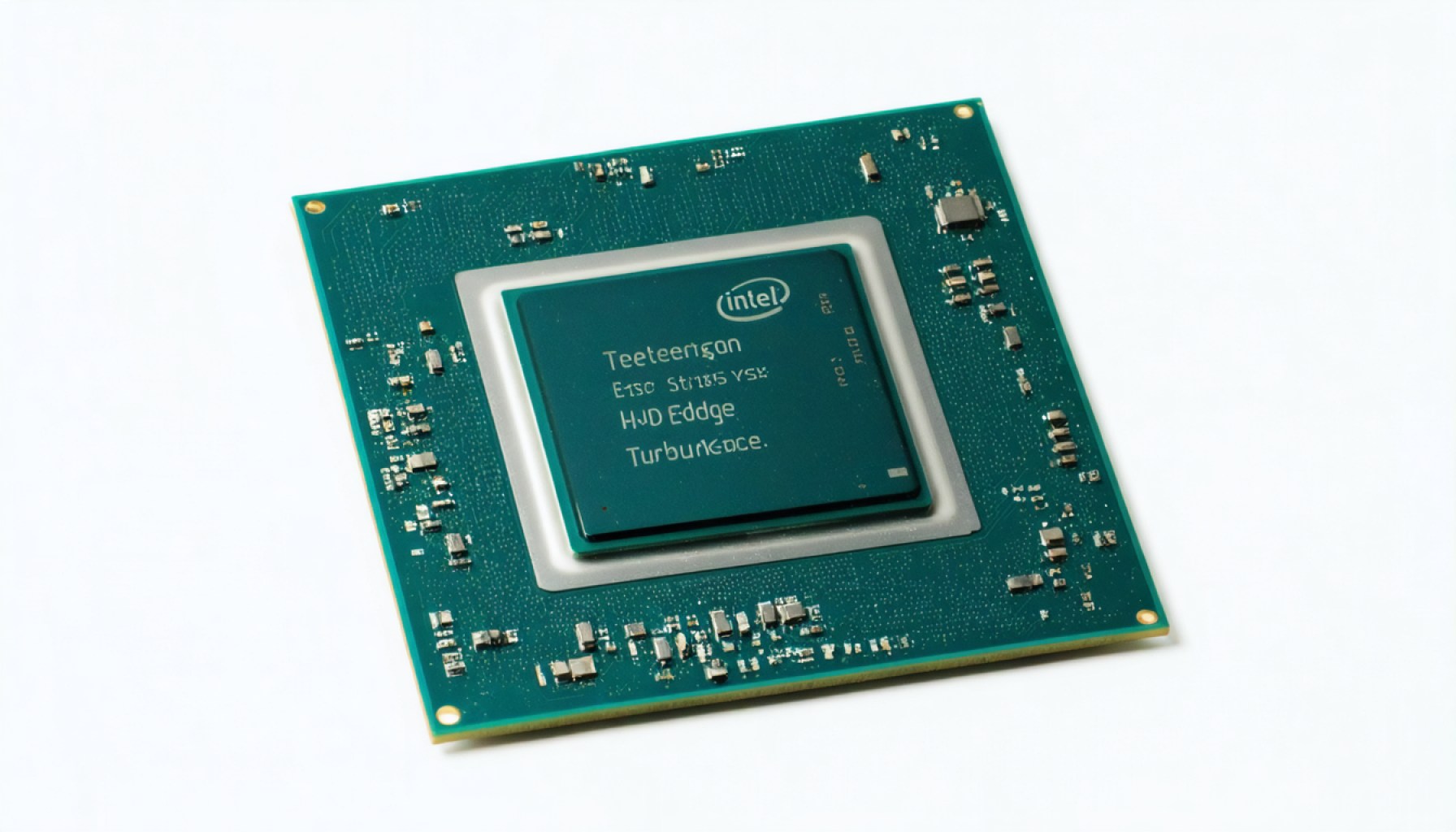- Intel is navigating a challenging phase marked by significant market volatility and shifts in leadership.
- CEO Lip-Bu Tan aims to streamline Intel by focusing on core semiconductor operations and potentially divesting non-core assets.
- Speculation surrounds Intel’s previous ambitions in the foundry business, with current plans unclear under Tan’s leadership.
- The semiconductor market remains turbulent, impacting companies like Nvidia and AMD, while tech giants Google and Microsoft experience moderate growth.
- Tesla sees significant gains in the electric vehicle sector, contrasting with Intel’s current uncertainties.
- Intel’s future hinges on Tan’s ability to navigate these challenges and define a stable path forward amidst industry rumblings.
In the ever-shifting landscape of technology, Intel finds itself standing at a crossroads. The semiconductor behemoth, once a stalwart of stability, now dances on volatile tides as market forces and leadership changes test its resilience. With a history punctuated by dramatic dips and swift rebounds, Intel’s stock tells a tale of turbulence—a 40% roller-coaster ride from $19 to $27.50 only to spiral back and forth relentlessly, as though in tango with the 50-week Simple Moving Average that blocks each bullish advance.
From the helm comes Lip-Bu Tan, Intel’s new CEO, confronting the ambiguity surrounding the company’s future. Tan, a familiar face who once exited Intel’s board over fractious decisions, has reappeared with resolve to reshape the giant’s strategic direction. In his maiden public address as CEO, Tan illuminated plans to carve out non-core factions of the company, seeking to streamline operations and zero in on core semiconductor production.
Despite the clarity Tan advocates, a cloud of uncertainty looms. Intel’s ambition, under previous leadership, had been a bold foray into the foundry business. Now, whispers of divestiture muddle that vision, as Tan suggests potential asset offloads without compromising key segments. This hint of transformation leaves investors with bated breath, eager for a roadmap yet cautious of missteps.
Amidst Intel’s tribulations, the broader tech sector strides with purpose. Behemoths like Google and Microsoft bask in a bullish glow, each rising by 1% and 0.7%, respectively, embodying investor faith in their enduring potential. Conversely, Nvidia and AMD succumb to semiconductor sector woes with minor declines. Meanwhile, a whisper from the electric vehicle industry propels Tesla upward, a triumphant 3.04% soar that outshines Amazon’s modest slide.
For Intel, the road ahead is both challenge and opportunity. With Tan at the helm, the world watches to see if clarity of vision and decisive action can steer Intel from today’s turbulent tracks to a future defined by stability and success. Whether this course correction fosters new heights or reveals more fault lines remains the pulsating question in the minds of investors and industry onlookers alike.
Intel’s Crucial Reboot: Will New Leadership Revive Its Semiconductor Dominance?
The Current Landscape
Intel is undergoing a significant transformation in response to market pressures and a strategic change initiated by its new CEO, Lip-Bu Tan. As a seasoned leader, Tan is tasked with repositioning Intel amidst fierce competition and rapid technological advancements.
Key Insights into Intel’s Transformation
Strategic Focus: Lip-Bu Tan plans to streamline Intel’s operations, divesting non-core assets while reinforcing its core semiconductor production capabilities.
Market Position: The fluctuation in Intel’s stock—from $19 to $27.50 and back—reflects ongoing market volatility and investor uncertainty. This uncertainty is compounded by previous leadership’s direction towards the semiconductor foundry business.
Industry Comparison: While Intel faces its hurdles, peers like Google and Microsoft are experiencing steady growth, highlighting their ability to navigate market challenges. Nvidia and AMD, like Intel, are navigating the complexities of the semiconductor market, which is grappling with supply chain disruptions and heightened competition.
How Intel Can Reassert Its Market Position
1. Focus on Core Competencies: Strengthening semiconductor manufacturing capabilities should be Intel’s main priority. This involves investing in next-generation chip designs and addressing existing supply chain issues.
2. Leadership Stability: Tan’s leadership should focus on creating a clear strategic vision that reassures investors and revives confidence in Intel’s direction.
3. Strategic Partnerships: Collaborations with tech giants and startups could bolster Intel’s R&D efforts and accelerate innovation.
Real-World Use Cases and Market Trends
5G and AI Integration: Intel can leverage its semiconductor technology in burgeoning fields such as 5G networks and artificial intelligence, both of which require powerful, efficient chips.
Sustainability Initiatives: Adopting sustainable manufacturing processes may improve not just environmental impact but also appeal to eco-conscious investors.
Comparing Industry Rivals
Nvidia vs. Intel: Nvidia focuses heavily on graphics processing units (GPUs) and AI; Intel should decide whether it will compete directly in these areas or carve its own niche.
* Intel vs. AMD: Intel must contend with AMD’s advancing CPU offerings. Pricing competitiveness and performance enhancements are critical areas for Intel to address.
FAQs: Addressing Investor Concerns
– Will Intel exit the foundry business? Currently, CEO Lip-Bu Tan has suggested potential asset offloads, but specific details are yet to unfold. His approach appears to safeguard core operations while assessing profitability.
– What are Intel’s plans for innovation? Intel intends to ramp up R&D investments, particularly in cutting-edge semiconductor technologies to regain its industry dominance.
Actionable Recommendations
– Stay Informed: Investors should monitor announcements from Intel, especially regarding divestitures and strategic direction, to make informed decisions.
– Consider Diversification: Given the semiconductor sector’s volatility, diversifying investments across multiple tech stocks may mitigate risks.
Conclusion
Intel’s path forward under Lip-Bu Tan’s leadership presents challenges and opportunities. A keen focus on core operations, strategic partnerships, and leveraging industry advancements can potentially reposition Intel as a leader in the semiconductor industry. Given its critical juncture, Intel’s trajectory will be closely watched by investors and industry analysts alike.
For further updates on the technology sector, visit Intel and diversify your reading with updates from leading technology companies.
